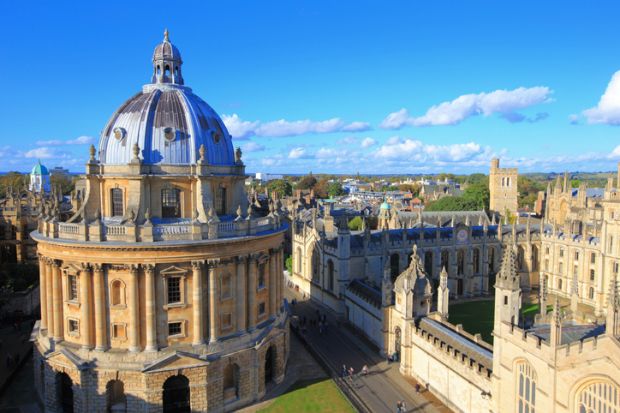State school pupils in inner London are three times more likely to get into the universities of Oxford and Cambridge than those in the North West and other regions of England as the gap in access rates reaches record levels, figures suggest.
Figures from the Department for Education show that 1.5 per cent of pupils from state-funded mainstream schools in England progressed to Oxford or Cambridge in the two years after they left school in 2019-20 – up from 1.3 per cent the year before.
Rates have been increasing more dramatically in inner London – from just 1.2 per cent in 2015-16 to 3 per cent last year.
However, just 1.1 per cent of pupils in the West Midlands, the North West or Yorkshire and the Humber go to Oxbridge – with little or no improvement in recent years.
Though the figures only begin five years ago, this means the gap in access rates to the country’s most prestigious institutions has never been greater.
James Robson, director of the Centre for Skills, Knowledge and Organisational Performance at the University of Oxford, said evidence showed that students from lower socioeconomic status backgrounds (SES) were less willing to travel for university, which was linked to the financial risks and emotional costs associated with attending distant universities.
“It’s probably fair to say that if low SES students tend not to travel so far for university, compared with higher SES peers, areas in the UK that are both further from Oxford and Cambridge and associated with higher levels of poverty are going to have fewer students attending these universities,” he said.
Dr Robson said the growth in regional inequalities of access could be linked with the wider state of the economy, particularly the massive increases in the cost of living.
But he said a whole range of other issues shaping students’ choices would have an impact, including perspectives on whether these universities were welcoming to students – views that might have been entrenched because of Covid restrictions.
The figures show that the gaps are growing at local authority level as well. In Newham, east London, 7.5 per cent of state school pupils got into Oxbridge last year – up from just 1 per cent five years before.
Brampton Manor Academy, a state school in the area that was recently named as the top school in the country for getting pupils into Oxbridge, appears to be one of the factors behind this rise.
Meanwhile, around a dozen areas recorded no entrants last year, with areas such as Bury, Knowsley and Halton doing so for the fifth year in a row.
Dr Robson said there were increasing concerns that close relationships with independent schools were simply being replaced by close relationships with elite state schools, which are “fast becoming the new clear pathway into an Oxbridge place”.
“Feeder state schools depend on privileged aspirational parents and students to achieve good Oxbridge outcomes just as much as the parents and students link Oxbridge places with the schools,” he said.
“Given the distribution of wealth around the country, it’s probably not surprising that new state feeder schools should emerge in London and the South East.”
Dr Robson said issues of geographic inequality for Oxbridge admissions were critical – both from the perspective of fairness and justice for students, and for the institutions themselves.
“The universities should be deeply worried about deepening geographic inequalities and what this means for university culture, but also for their position in wider society,” he said.
He suggested the figures could point to a need for a more centrally driven widening participation strategy – rather than the college-led system Oxford and Cambridge used at present.
Lee Elliot Major, professor of social mobility at the University of Exeter, said that higher education was off-limits for a huge slice of the population.
“The damning truth is that in modern Britain where you are born, not just who you are born to, has a profound impact on your educational prospects,” he added.
Register to continue
Why register?
- Registration is free and only takes a moment
- Once registered, you can read 3 articles a month
- Sign up for our newsletter
Subscribe
Or subscribe for unlimited access to:
- Unlimited access to news, views, insights & reviews
- Digital editions
- Digital access to THE’s university and college rankings analysis
Already registered or a current subscriber? Login








